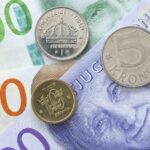US dollar was set to lose ground against most of its peers on a weekly basis, sliding lower against the Japanese yen as well on Friday, as four Federal Reserve officials with varied voting records on monetary stimulus gave indications of a greater willingness this week to begin tapering asset purchases as soon as central banks meeting in September.
USD/JPY fell to its lowest point today at 96.32 at 3:34 GMT, after which consolidation followed at 96.60. Support for the pair was expected to be found at August 8th low and also a seven-week low, 95.81, while resistance was to be encountered at August 7th high, 97.53.
“I would clearly not rule out a decision to start dialing back the purchases at the Sept. 17-18 gathering of the Federal Open Market Committee”, Chicago Fed President Charles Evans said two days ago in Chicago, cited by Bloomberg. “We’ve seen good improvement in the labor market, there’s no question in my mind about that,” and “I’m still wanting to see greater evidence that it’s a sustainable improvement.” These comments were similar to those made by Cleveland Fed President Sandra Pianalto, who has always voted with the majority during her 10 years on the FOMC.
“Employment growth has been stronger than I was expecting, and the unemployment rate today is more than half a percent lower than I projected it to be last September,” Pianalto said in front of the audience in Cleveland on August 7th, cited by Bloomberg. “In light of this progress, and if the labor market remains on the stronger path that it has followed since last fall, then I would be prepared to scale back the monthly pace of asset purchases.” Following these comments the greenback found itself under pressure.
Meanwhile, earlier on Friday a government report showed that activity in the tertiary industry decreased by 0.3% in June on a monthly basis, exceeding expectations of a smaller drop, by 0.2%, as the index had shown a 1.3% higher value in May, a revision up from 1.2% previously.
At the same time, the survey, regarding consumer confidence in Japan, showed a result below 50.0, which is the divide line between positive and negative assessments. In July it showed a reading of 43.6, marking its lowest level in six months, which was also below expectations of a value of 45.0, while a month ago the result pointed 44.3.
The yen received additional boost, after the National Bureau of Statistics in China said that industrial production in the country rose by 9.7% during July 2013 compared to July 2012, while a median estimate pointed an 8.9% increase. The result showed improvement in comparison with a month ago, when the index of production advanced 8.9%. These figures implied that economy may be stabilizing, following also the strong trade balance report, released yesterday. It seemed very likely that China may evade a serious economic slow down, especially after the upbeat export and import figures. A separate report revealed that the index of consumer prices increased by 2.7% during July on annual basis, which, however, remained below the government’s 2013 objective of a 3.5% inflation for a seventh month in a row. Last but not least, retail sales jumped by 13.2% in July on annual basis.
Elsewhere, the Japanese currency was trading with a slight change against the euro, as EUR/JPY cross ticked up a mere 0.02% to 129.44 at 7:07 GMT. GBP/JPY pair was also gaining for the day, up by 0.15% to trade at 150.49 at 7:08 GMT.





